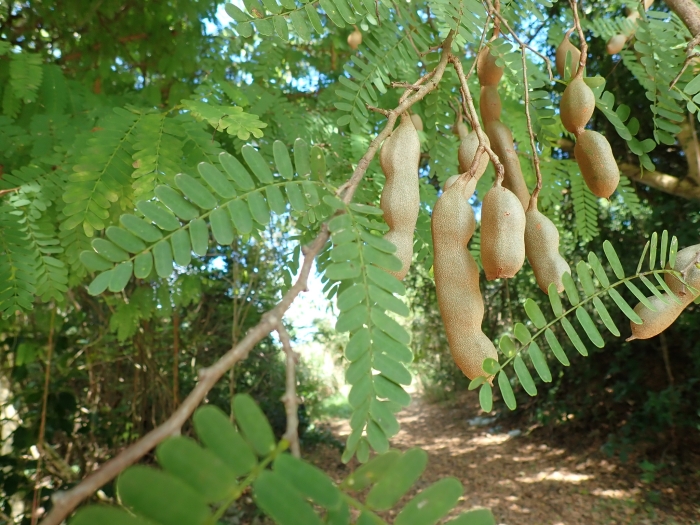Tamarind
(Tamarindus indica)
Tamarind (Tamarindus indica)
/
/

Don Loarie
CC BY 4.0


































































Estimated Native Range
Summary
Tamarind trees are valued for their edible fruit, which is used in cuisines worldwide, and for their shade-providing canopies in hot climates. They are often grown in tropical agricultural systems and are also planted as ornamental trees in parks and gardens. The tree is drought-tolerant and can grow in a variety of soil types, including clay, loam, and sandy soils, but it requires good drainage. It thrives in full sun and is sensitive to frost. Tamarind is also known for its medicinal properties and is used in traditional medicine. However, it can be invasive outside its native range, so care should be taken when planting it in non-native areas.CC BY-SA 4.0
Plant Description
- Plant Type: Tree
- Height: 40-60 feet
- Width: 30-50 feet
- Growth Rate: Moderate
- Flower Color: N/A
- Flowering Season: Spring
- Leaf Retention: Evergreen
Growth Requirements
- Sun: Full Sun
- Water: Low
- Drainage: Medium, Slow
Common Uses
Bank Stabilization, Drought Tolerant, Edible*Disclaimer: Easyscape's listed plant edibility is for informational use. Always verify the safety and proper identification of any plant before consumption., Fragrant, Salt Tolerant
Natural Habitat
Dry savannahs of sub-Saharan Africa
Other Names
Common Names: Indian Date , Kilytree , Indian Tamarind , Tamarinde , Tamarindenbaum , Tamarindo , Tamarin Des Bas , Tamarinier , Tamarinier Des Bas , Tamarin
Scientific Names: Tamarindus indica , Tamarindus occidentalis , Tamarindus indica var. occidentalis , Cavaraea elegans , Tamarindus erythraeus , Tamarindus indica var. emarginata , Tamarindus officinalis , Tamarindus somalensis , Tamarindus umbrosa
GBIF Accepted Name: Tamarindus indica L.